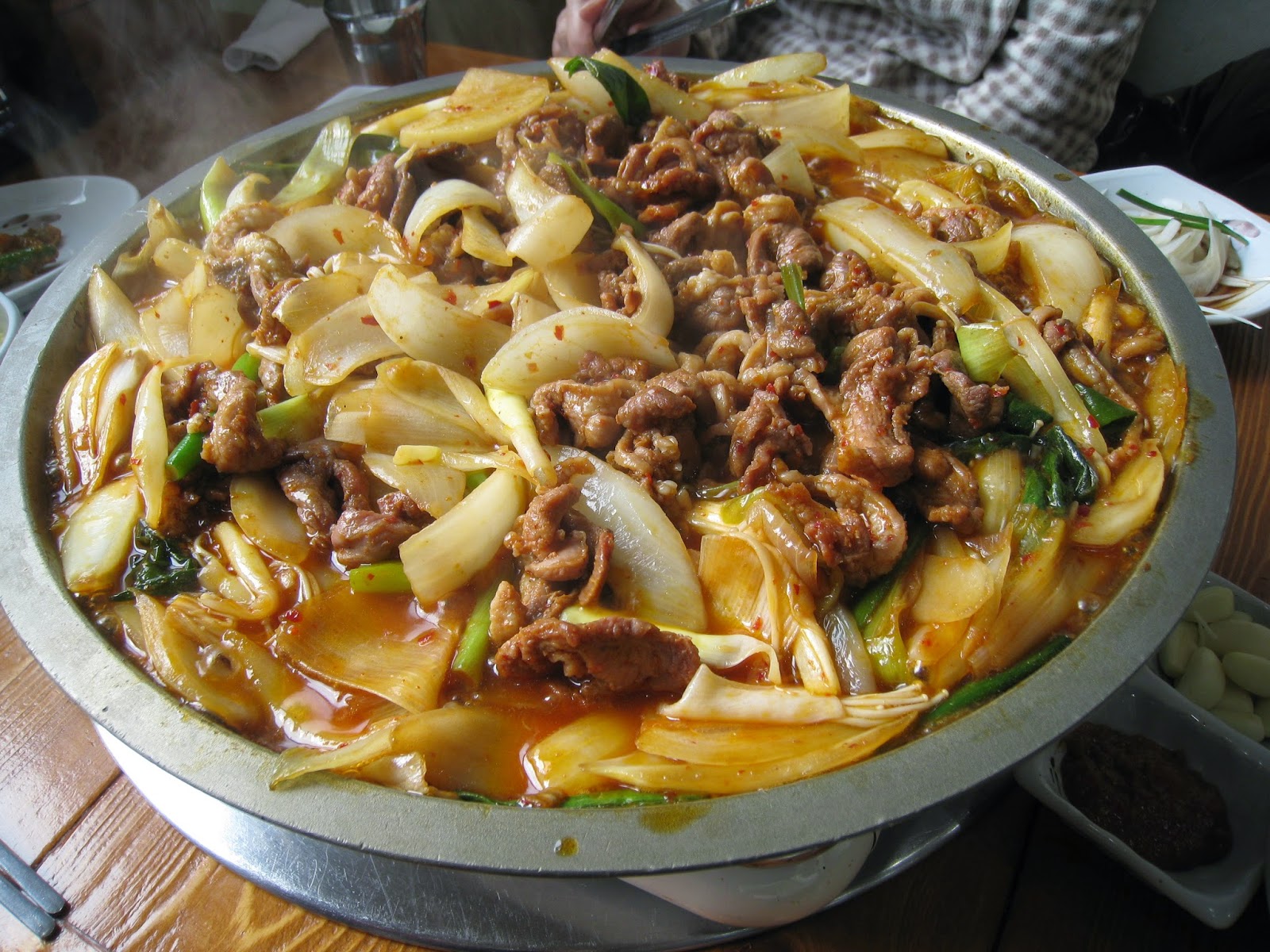There are more than a half dozen restaurants on this block, a convenient three-minute walk from our office in Herren Haus.
 |
| Erma in front of our local "Restaurant Row", with "coffee" (more on that later) |
While some of the restaurants have a few tables with chairs, most seating is on the floor, at low tables on raised heated platforms. You remove your shoes before stepping onto the platforms. Quite a few of the restaurants have multiple rooms separated by sliding doors.
 |
| Floor seating |
I should say also that these are very workaday places, with simple food and basic service. Korea has plenty of fancy, expensive restaurants too.
Until you get used to how these places work, you may be baffled by the lack of cutlery on the table. Nor do the servers bring you any. Indeed, if you are an ordinary American, you might not even notice this nondescript box resting serenely on the table:
You should open it.
 |
| Spoons and chopsticks! |
 |
| Need napkin? Just add water. |
The restaurants almost all have minimal menus, specializing in one or two dishes. You're not expected to take time deciding what you want. It's assumed that you already know what you want before you walk in -- otherwise why would you be there in the first place?
This menu is pretty typical:
This place essentially has two dishes: knife-cut noodle soup (kalguksu 칼국수) and bibimbap 비빔밥. The noodle soup comes in a few variations.
There are also two dishes—braised pork loins (dwaeji suyuk 돼지 수육) and scallion pancake (pajeon 파전) that are meant to accompany alcohol and are sized for groups. They're essentially the "happy hour" menu, as these places turn into drinking establishments in the evening.
Here's an even simpler food menu, with only three items (all the items in the yellow box are alcoholic drinks):
 |
| Menu at one of the local loach soup (chu'eotang 추어탕) restaurants |
 |
| Menu on the right; on the left is the list of ingredients and source countries |
- rice and kimchi: Korea
- pork: Belgium and Chile
- beef: Australia and New Zealand
 |
| Left side is headed "Duck Menu"; right side is headed "Korean Beef Menu" |
Nearly every restaurant has a little "milk coffee" machine near the front door. They all say a cup of coffee costs 100 won (less than ten cents), but in fact they are rigged up to be free. They dispense about 3 ounces of low-quality coffee cut with milk and sugar into a small paper cup.
 |
| This one says "tea time", but it dispenses coffee. |
I forgot to mention that the coffee machines are self service. Sometimes a sign makes this explicit.
 |
| "Coffee is Self" (with "self" written in Korean and then again, for unknown reasons, in English) |




See http://dueminutispesibene.blogspot.sg/2015/03/amenities.html !
ReplyDeleteSeen and enjoyed!
ReplyDelete